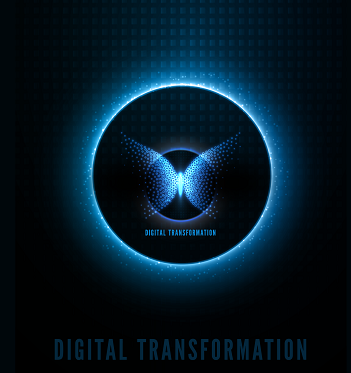Digital Transformation – Budgeting for the Change
This is the sixth column we present by Roshini Kumar on Digital Transformation of Education

By Roshini Kumar
The education system is going through a “Digital Transformation” to meet the demands of the “Knowledge Age” and changing forever into a Connected Learning Community. The Connected Learning Community approach is not a single entity or product, but a series of architected frameworks, global standards, and best practices. The following outlines what needs to be budgeted to improve the learning ecosystem, including learning, teaching, parenting and administration scenarios made possible when applying this framework, and the design objectives for making this potential real.
Every stakeholder of education should realize that in the next decade we must prepare to charter the unfamiliar terrain that lies ahead. We need new kinds of enabling devices, very different competencies and a whole new sense of direction. New times call for new organizations that can handle uncertainties of the knowledge age of the future, rather than the industrial age of the past.
A sufficient financial budget should be provided to each stakeholder of education to equip themselves with the right devices and technology to enable smooth Digital Teaching-Learning process.
Connected Learner
The connected Learner is the focal point of the Connected Learning Community. The connected Learner should be provided with access to a powerful learning space which enables them to analyze, critique, observe, synthesize, and express—whether online or on the go. While the richest learning experience (including mobile and/or disconnected use) is provided by a smart client device, learning experiences are available through alternate clients including “thin client” edge devices, Web browsers, and alternate devices such as mobile phones and personal digital assistants. Through these various client devices, they have access to their friends and classmates, to their family, and to powerful software tools to help them in their learning endeavors.
The connected Leaner has access from:
Personal learning devices (online or offline)
The connected Leaner has access to:
Their files
Their teachers
Their peers
Rich content libraries
Tools that let them express their ideas creatively
Tools that help them better manage their time
Tools that help them work and learn as part of teams
Tools that help them analyze the world around them
Empowered Educator
The Empowered Educator is the conductor of the Connected Learning Community. Their personal teaching and learning space is also accessible from a multitude of devices including Web browsers and “thin client” edge devices for nomadic use, with the richest experience occurring at their portable, intelligent teaching and learning device.
The Empowered Educator is connected to:
Their peers
At their school
At other schools in their region
At other schools in their state
Around the world
Their students
Through rich, timely data
Through information about their performance
Through the students learning portfolio
Through real-time communication (either face to face or online)
Through asynchronous communications
Their students’ families
By easily providing families information about
Student activities
Student performance
School activities
By being more accessible through online/virtual meetings and conferences
By being able to communicate directly with the family
Participative Parent
The Participative Parent can be seen as a facilitator in the connected learning community. They are connected to vital information about what is happening in school, not only through information related by their child, but by connecting directly with the school. The connected parent can access information about all of their children by accessing a single Web site from a computer at home, at work, through mobile, or even to a subset of the information through a phone-enabled interface to their personal space. Important information such as school-related events can be viewed in an aggregated fashion with their personal schedule information.
The Participative Parent has access:
From a computer at home
From a computer at work
From devices
The Participative Parent can
See what their child is doing in school
See how their child is doing in school
Schedule time to meet with teachers
Communicate with teachers easily
See teachers’ feedback
Learn how to help their child learn specific subject matter (through on-line resources)
Purchase items and services from a school-vetted list to help their child succeed
Stay informed about school activities by participating in “school community”-type meetings with administrators (live, online, or on-demand after the event).
Learn how their local school is performing relative to other schools
Change Maker – Connected Administrator
The connected administrator is the CEO in the connected learning community. The connected administrator rests well at night knowing that their teachers do not have to waste valuable time doing administrative or clerical tasks and can focus on their teaching and furthering their own learning through sustained professional development activities. They are confident that quality teachers want to teach at their school, thereby eliminating the challenges of attracting and retaining quality faculty.
The connected administrator is connected to:
The community
Easily addressing the community through the Web App
Soliciting community input through the Web, e-mail, phones, surveys, etc.
By enabling the community to know about important meetings through a shared community calendar
Making meetings open to people independent of location
Their staff
Through improved performance monitoring systems
Through the ability to address and solicit feedback from teachers through the web, e-mail, phones, surveys, etc. without taking away from valuable face-to-face time with students and parents
Their peers
By sharing best practices
Being able to discuss common issues (and resolutions)
Have access to a peer mentor
Government Agencies
By more easily sharing data directly with oversight groups
Having access to legitimate performance information
Being able to more easily manage their budgets and school resources
This learning ecosystem is the Connected Learning Community, a community of learning for teachers, parents, students, and administrators.
A Vision for Education
An effective and comprehensive learning ecosystem delivers tools for learning, focusing on the role of technology as an enabler rather than on the technology itself. As teaching is refocused to learning, this ecosystem must be in place to facilitate individuality in place of traditional educational processes. This learning ecosystem is flexible, adapting to new innovations in teaching, learning, and technology.
Schools should be helped to overcome social, economic and technology challenges and improve the learning ecosystem. Community should support anytime, anywhere learning which will help to create a global Connected Learning Community in which all students and educators have access to tools and information to support learning today and for a lifetime.
In order for technology to improve education, schools must consider the total environment and fully understand the learning ecosystem. Barriers present in the ecosystem must be irradiated and appropriate technology-based solutions must be applied to overcome those barriers and thereby assist educational organizations in achieving their goals. Global information technology standards, provide a broad range of capabilities for improving the learning ecosystem.
The Budget Objectives
The right budgeting delivers opportunities to equip students, teachers, parents, administrators, and the surrounding community with the environment required to meet their individual needs. The budget objectives should address both today’s challenges and those of the future through evolving solutions and products that address the specific needs of the ecosystem.
The right financial budget should be provided to schools for upgrading their digital infrastructures, to students to acquire technology, to educators to update their digital teaching skills and to acquire devices and software.
India has 1.4 million K12 Schools, 9.5 million K12 school teachers and 250 million students studying in K12 Schools. Digital Transformation in the current pandemic situation should be adequately funded to avoid deep impact on our intellectual capital in the future.
If you have any question on funding Digital Transformation write to me, I will find solutions through expert advice.

ROSHINI KUMAR
Thought Leader –
Digital Transformation
roshinik@lyceecorp.com
You can access previous columns by Roshini Kumar here:
You can read the first column here
You can read the second column here
You can read her third column here
You can read her fourth column here
You can read her fifth column here
Listen to Roshini Kumar talk about overall #Digital #Strategy in the digital transformation of education 👇